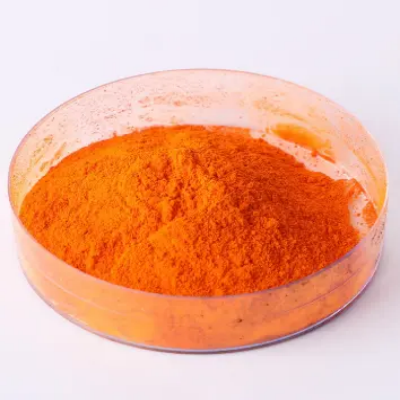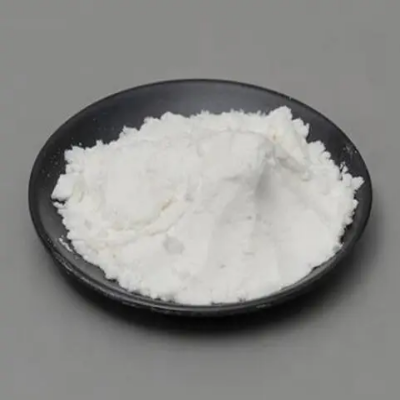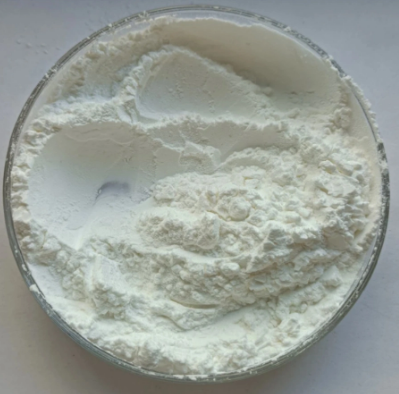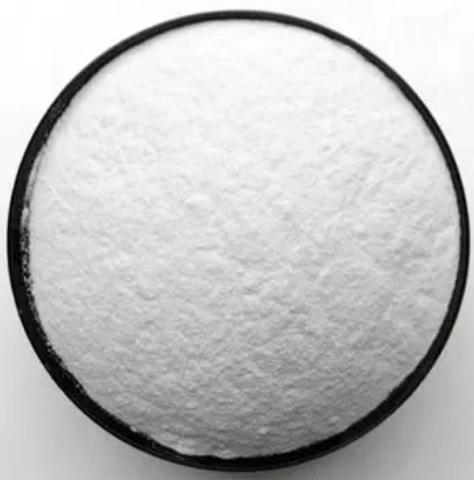-

Acetylacetonatocarbonyltriphenylphosphine rhodium (I) CAS:25470-96-6
Acetylacetonatocarbonyltriphenylphosphine rhodium (I) is a coordination complex with the chemical formula Rh(acac)(CO)(PPh3)2. It is a rhodium(I) complex containing acetylacetonate, carbonyl, and triphenylphosphine ligands. This complex is widely used as a catalyst in various organic synthesis reactions, particularly in the field of homogeneous catalysis. Its unique structure and reactivity make it valuable in promoting a variety of chemical transformations, including hydrogenation, hydrosilylation, and hydroformylation reactions. Additionally, it is employed in the production of fine chemicals, pharmaceuticals, and advanced materials. The complex’s ability to facilitate selective and efficient catalytic processes has made it an important tool in the development of new synthetic methodologies and the production of valuable chemical products. Its applications extend to the synthesis of complex natural products and pharmaceutical intermediates, highlighting its significance in the field of organic chemistry and industrial chemical synthesis.
-

(Pentamethylcyclopentadienyl)iridium(III) chloride dimerCAS:12354-84-6
(Pentamethylcyclopentadienyl)iridium(III) Chloride Dimer is an organometallic complex composed of two iridium centers bonded together through a shared ligand. Each Ir center possesses five methyl groups attached to cyclopentadiene rings forming pentamethylcyclopentadienyl moieties. The molecular formula is C24H*38Cl*2Ir*2, with molar mass approximately equal to 758 g/mol. This complex has been widely studied due to its unique properties and functions across various industries.
-

Iridate(3-),hexachloro-, sodium, hydrate (1:3:?), (OC-6-11)- CAS:123334-23-6
Iridate(3-),hexachloro-, sodium, hydrate (1:3:?), (OC-6-11)- is a chemical compound with the formula Na3IrCl6·xH2O. It is a hydrated sodium salt of hexachloroiridate(III) and is commonly found in the form of yellow or orange crystals. The value of “x” in the formula represents the variable number of water molecules associated with the compound. This compound is utilized in various chemical and research applications due to its unique properties.
-

DIRHODIUM (II) TETRAKIS(CAPROLACTAM) CAS:138984-26-6
Dirhodium(II) tetrakis(caprolactam), also known as dirhodium caproxen, is an organo-metal complex consisting of two rhodium atoms bridged by four nitrogen atoms from caprolactam molecules. The structure forms a rectangular shape around both metals.
-

potassium hexachlororhodate(iii) CAS:13845-07-3
Potassium hexachlororhodate(III), also known as potassium rhodium trichloride or KRhCl3 is an inorganic compound with the chemical formula of RhCl3K. It appears to be white crystalline solid at room temperature under normal atmospheric conditions. This substance can react violently upon contact with water producing hydrogen chloride gas which might form acid fumes that are harmful for eyes, skin, respiratory system causing irritation, corrosion or even burn injuries. The use of personal protective equipment such as gloves, goggles etc., should be taken into consideration when handling this compound.
-

Guanine hydrochloride CAS:635-39-2
Guanine hydrochloride is a chemical compound composed of guanine, one of the four nucleobases found in DNA and RNA, and hydrochloric acid. It is commonly used in biochemical and molecular biology research as a source of guanine for studies on nucleic acids and as a supplement in cell culture media. Its role in the laboratory setting includes serving as a substrate for enzymatic reactions and as a component in various experimental protocols.
-

Guanosine CAS:118-00-3 Manufacturer Price
Guanosine is a nucleoside consisting of the nitrogenous base guanine linked to a ribose sugar. It is a building block of RNA and plays a role in cellular energy transfer as part of GTP (guanosine triphosphate) and other important cellular processes. Guanosine has also been studied for its potential therapeutic applications in various health conditions.
-

Citicoline sodium CAS:33818-15-4 Manufacturer Price
Citicoline sodium, also known as cytidine diphosphate-choline, is a nutritional supplement and a source of choline, which is an essential nutrient for brain health. It is used to enhance memory, cognitive function, and overall brain health. Citicoline sodium has been studied for its potential benefits in conditions such as stroke, dementia, and traumatic brain injury. It is thought to work by increasing levels of neurotransmitters in the brain and supporting the formation of phospholipids, which are essential components of brain cell membranes.
-

Guanosine-5′-diphosphate, disodium salt CAS:7415-69-2
Guanosine-5′-diphosphate disodium salt, also known as GDP-Na2, is a nucleoside diphosphate comprised of guanosine linked to two phosphate groups and stabilized by two sodium ions. It plays a crucial role in various cellular processes, including signal transduction, energy metabolism, and protein synthesis. In research and pharmaceutical applications, GDP-Na2 is utilized as a substrate, cofactor, or regulatory molecule, aiding in the study of cellular functions and drug development.
-

Cytidine CAS:65-46-3 Manufacturer Price
Cytidine is a nucleoside molecule composed of cytosine and ribose. It is one of the building blocks of RNA and plays a fundamental role in the genetic code and gene expression. Additionally, it can be converted into cytidine triphosphate, a molecule that is essential for nucleic acid synthesis and energy transfer in cells. Cytidine also has potential therapeutic applications in cancer treatment and antiviral therapies.
-

Palladium CAS:7440-05-3 Manufacturer Price
Palladium is a rare, lustrous silver-white metal that belongs to the platinum group of elements. It is known for its remarkable catalytic properties, which make it a vital component in a wide range of industrial and technological applications. Palladium is used in catalytic converters to reduce harmful emissions from vehicle exhaust, as well as in the production of electronics, dentistry, jewelry, and chemical catalysts.
-

dCTP, 2′-Deoxycytidine-5′-triphosphoric acid disodium salt CAS:102783-51-7
2′-Deoxycytidine-5′-triphosphoric acid disodium salt is a nucleotide analog that serves as a precursor in DNA synthesis. It is used in molecular biology research and in studies related to genetics and genetic processes. This compound plays a crucial role in DNA replication and transcription, making it an important tool for understanding genetic mechanisms and developing potential therapeutic interventions.

